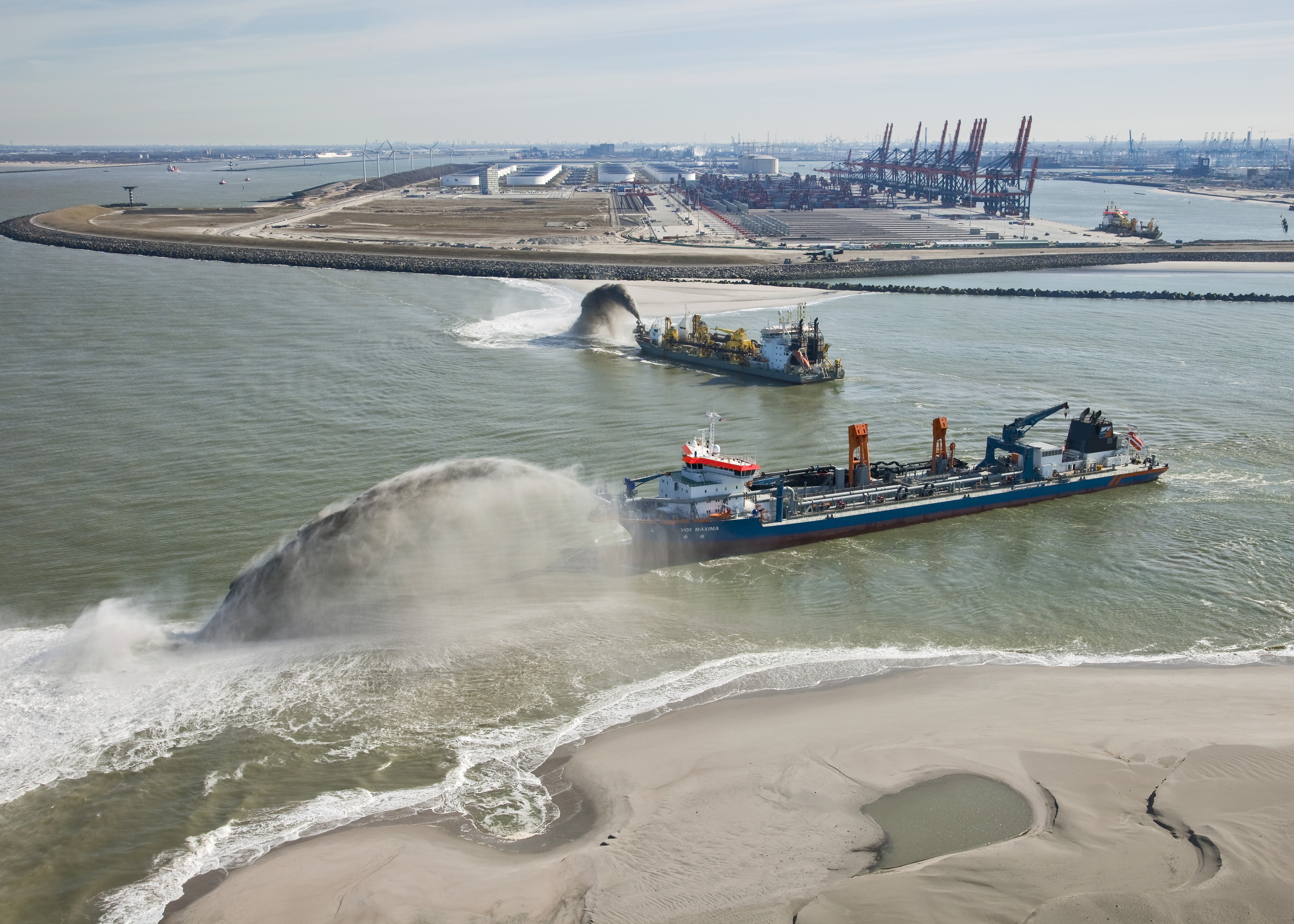Port construction

Economic development is an important aspect of every country or region, a proper infrastructure is vital in order to achieve this. Ports act as the gateway to global trade and are therefore a vital part of any country with access to the seas.
As such, any port construction project is important and in turn dredging works are a significant part of any port construction project. Deepening access channels, creating new land for terminals and in the end the maintenance of all shipping lanes is done with dredging.
Evolution of maritime ports
For as long as trading has taken place in the world, maritime ports have played a vital role in the transport of goods. In ancient times, people commonly made use of “natural ports” that were available in bays and estuaries. However, gradually, more work had to be done to keep these ports accessible, due to sedimentation, changing waterway routes and dynamic coastlines.
The role of dredging in port construction
The growing demand for energy sources created by industrialisation propelled developments in the oil and gas sector, and consequently generated a marked rise in shipping. In particular, bulk carriers for the transport of oil, coal, and minerals have seen their size, as well as their draft, increase exponentially over the past century. As a result, the requirement for dredging has become one of the main activities in the port construction and development business. Dredgers are involved in activities such as deepening and excavating operations, creating new land for port infrastructure, and adapting ports to suit various soil conditions, making them indispensable for modern port development.
How does port construction work?
Port construction projects are often large-scale operations. The dredging part is generally the start of the project after which the rest of the infrastructure (e.g. quay, warehouses, roads etc.) gets built.
1. Project planning
After identifying an opportunity comes the planning phase. During the project planning the answer to the dilemma ‘can and should we do the dredging of this port construction’ must be formed. The answer to this dilemma is a combination of three: figuring out the best way to approach a dredging project, determining the most optimal approach and equipment required and the anticipated return on investment.
It is our aim to make sure that whatever project and approach you choose for this port construction you will be successful. We are able to assist in the very first phases of a project via consultancy, feasibility studies, setting up a preliminary business case and more.
2. Dredging equipment selection
Once the general outline of a dredging project for port construction is known comes the phase of how exactly are we going to do this? The practical side of the dredging operation. Do we need a cutter suction dredger, trailing suction hopper dredger or perhaps smaller, more specialised equipment? What size should it be? How much will it cost and is there more we need to successfully execute this work? But also, is our crew skilled enough? Can we do this or do we need training or support beforehand?
Royal IHC equipment available designed specifically for the conditions suitable for land reclamation
- Cutter suction dredger
- Trailing suction hopper dredger
- Dredge pump
- Dredge line components
- Operations monitoring
3. Execution
Now that everything is in place; the studies have proven it possible, equipment has been delivered and personnel can operate it, it is just a matter of doing the job. In this stage of a dredging project other concerns arise. How can we keep the operation running? Can we optimize our process? And, possibly, how can we grow our business, find new work and expand our fleet?

Are you ready to start your project?
Get in touch and we will help you get started.